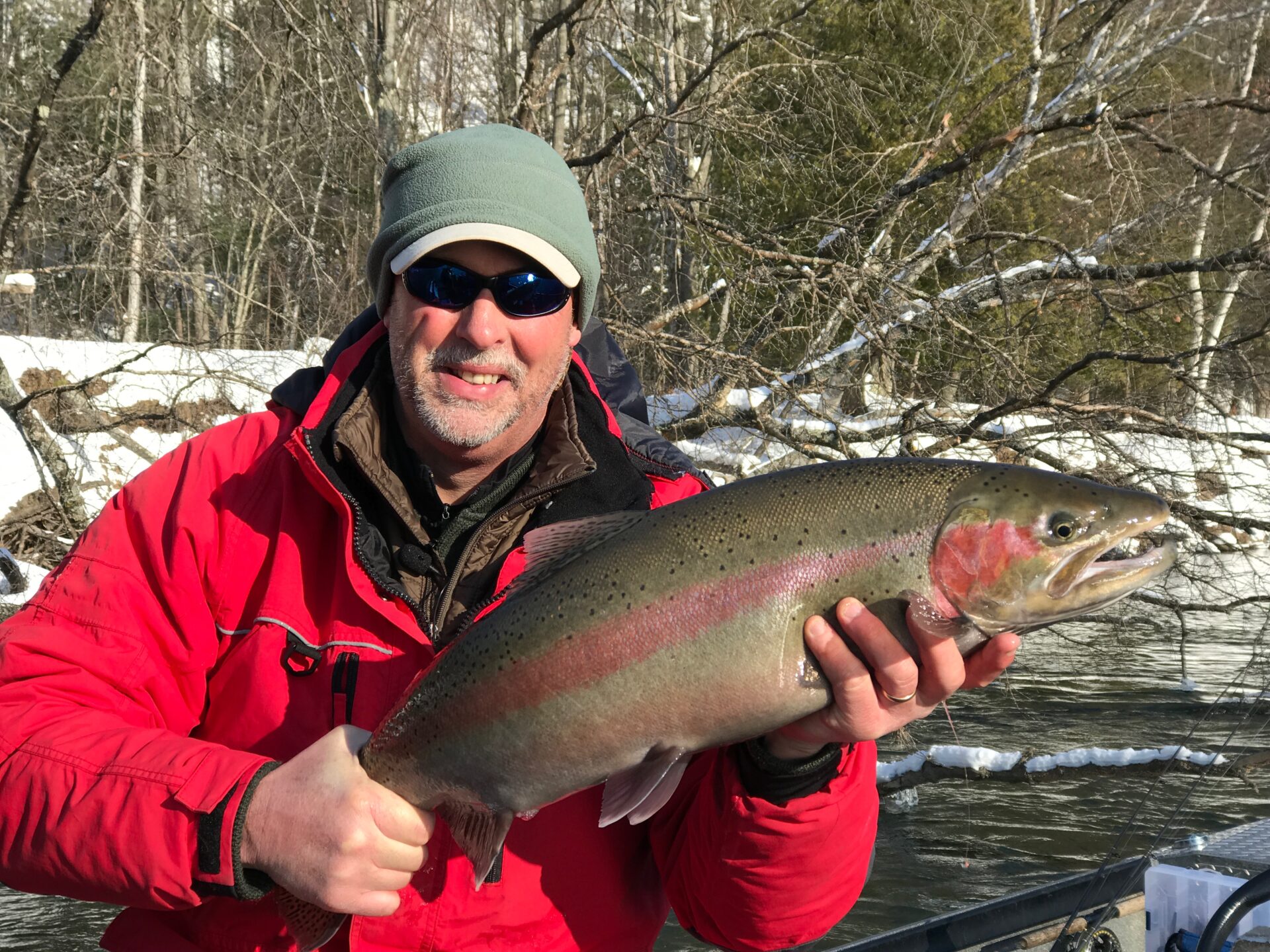The Legendary U20 Flatfish
In the sport fishing arena a handful of fishing lures reach what can only be described as legendary status for their ability to produce fish time and time again and also from coast to coast. The U20 Flatfish is one of those esteemed lures that everyone owns, uses and has faith in.

While Flatfish are produced in 14 different sizes, the U20 is hands down the most popular size among river steelhead fishermen who covet this lure for it’s wide wobble, hunting action and sonic thump. What sets the U20 apart is the exceptional action it delivers at slow trolling speeds and more specifically when these lures are back-trolling in rivers.
BACK-TROLLING WITH THE U20
Back-trolling in rivers with plugs is the practice of holding a boat steady in flowing water while allowing plugs like the U20 Flatfish to trail downstream of the boat. By holding the boat steady in the current and also by slowly allowing the boat to slip downstream the current brings these plugs to life and causes them to dive, wobble aggressively and also to hunt from side to side.
Normally four plugging rods are fished out the back of a drift boat, jet sled or other fishing skiff and each rod is strategically positioned in a saddle style rod holder that evenly separates the rod tips and trailing lures. Baits like the Flatfish are normally fished 30 to 70 feet downstream of the boat and the boat is positioned upstream of runs, holes, river bends and other places that routinely hold steelhead.
Savvy plug fishermen hold the boat steady in key places while the plugs work their magic fishing near bottom. After a spot is fished for awhile the boat is then rowed or an electric motor used to slide across the current and slightly downstream. Rowing or pulling the boat across the current, sweeps the lures into position and covers water efficiently.
Once the boat passes through a stretch of water that is believed to hold fish, the boat is then either rowed or motored downstream to the next run and the whole process repeated.
It’s important to note that when steelhead take other traditional lures and baits the strike is notoriously subtle and hard for some anglers to detect. The resulting strikes when a steelhead unloads on a plug are nothing short of savage. Often the rod is pinned to the water while the fish makes a screaming run complete with several jumps! Until the fish finally stops cartwheeling, it can be difficult to even get the rod from from it’s saddle style rod holder.
Back-trolling is popular among river guides because this presentation puts several plugs in the water at one time and allows the guide to expertly position the boat and wobbling baits in key spots. When back-trolling the anglers are positioned near the back of the boat in comfortable swivel chairs as they wait for a rod to slam down.
When a fish is hooked, the boat is quickly anchored while the fish is being fought. Anglers in the Great Lakes often use winch style electric anchors (www.anchorwizard.com) that allow the anchor to be deployed and raised in seconds.
The ability to quickly anchor the boat makes it possible to pull fish off the top of a run without disturbing other fish further down the run. After a hooked fish is landed, the boat anchor is raised and the back-trolling process continues.
COLORS MATTER
As is often the case in steelhead fishing, certain plug colors produce better on bright days and others produce best on overcast, cloudy conditions or early and late in the day. For bright conditions a few of the best Flatfish colors include the Double Trouble, California Watermelon, Metallic Silver/Chartreuse and Metallic Silver Red Spot. Early and late in the day and on overcast days the Metallic Gold, Metallic Gold Red Tiger, Metallic Gold Green Pirate and Perch Tiger are routinely productive colors.
FROG WATER
Lots of different wobbling plugs are used for targeting steelhead in the late fall and throughout the winter months. The lower reaches of river systems where the current is sluggish typically hold the most fish during the cold winter months.
It’s in these situations where the current is moving slowly that most plugs simply don’t have much action. The U20 Flatfish excels in sluggish water or what steelhead anglers refer to as “frog water”! The U20 can be fished much slower than other plugs, giving it a clear advantage late in the season when water temperatures are icy cold and steelhead are exceptionally lethargic.
SCENT HELPS
Most anglers who plug fish for winter steelhead are also big fans of “juicing” they favorite lures with fishing scents. Scent jelly and paste made from natural steelhead forage species like alewives, smelt, gizzard shad, herring and crayfish help to put fish at ease and creates an enticing scent stream in the water.
It’s best to apply fishing scents directly to plugs every 20 to 30 minutes while fishing. At the end of the fishing day, use a little soap and water to clean up the plugs before storing them for the next fishing trip. Cleaning greasy fishing scents from lures helps to keep bait finishes in top shape and eliminates any rancid smells that can occur when fishing scents are exposed to the air and sunlight.
SUMMING IT UP
Targeting steelhead on rivers in the winter is popular up and down the west coast and also all across the Great Lakes region. At a time when most anglers have hung up their fishing gear for the season, steelhead fishermen are just hitting their stride.
River steelhead and the heart pounding strikes produced by the U20 Flatfish make the winter months seem way too short.
